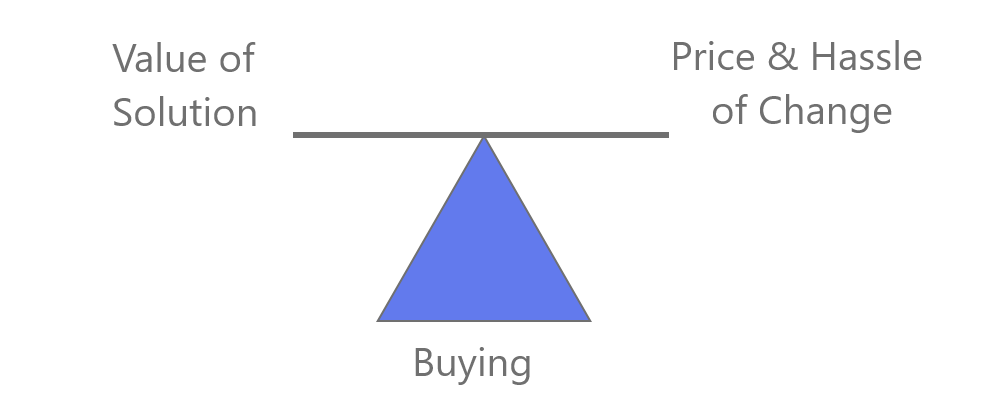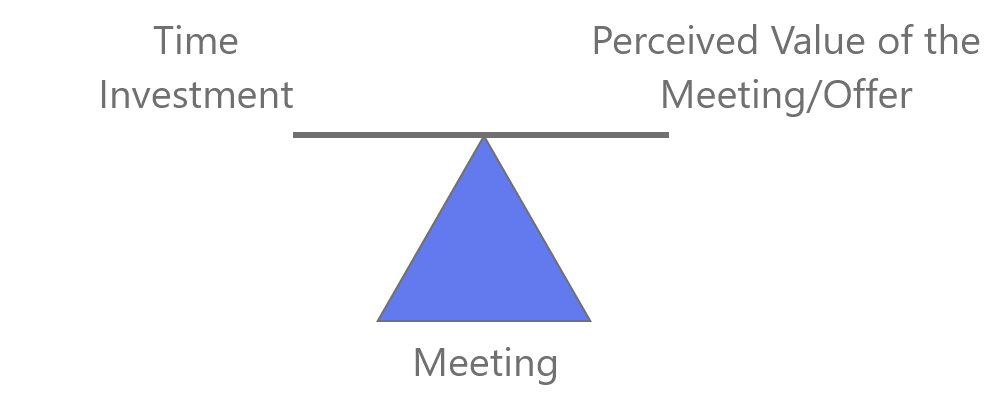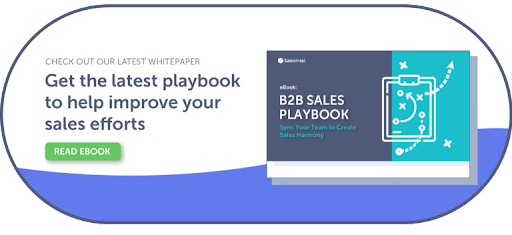The modern buyer is immune to cold calls and emails, and they are quickly turned off by irrelevant, scripted communications. Despite this, many teams’ outbound sales methods are reluctant to evolve. As a result, many sales leaders struggle to develop a strong and consistent sales pipeline.
72% of sales managers meet with their sales reps each month to assess the sales funnel. However, 63% of respondents believe that their organizations do a poor job of controlling their sales pipelines, indicating a major opportunity for improvement.
We have come up with the 5 sales plays to build your sales pipeline faster and allow sales reps to build a dialogue and digital relationship with their prospects.
- Building Your Prospect List
- Leveraging 3×3 Research
- Overcoming Sales Challenges
- Getting Buyer Commitment
- Handling Objections and Time Management
Sales plays are hidden weapons that businesses use to locate prospects who are likely looking for their solutions. Whether it’s seizing on a “newsjacking” opportunity or targeting an executive who has recently begun a new position, sales plays make spotting prospecting possibilities simpler.
So, let’s get started!
Play 1: Building Your Prospect List
What are the tough things about prospecting?
The aim of creating a B2B list is to build a prospecting list that is highly reliable and targeted. You don’t want to waste weeks or even months emailing a lead to your list, only to find that this individual isn’t a good match for your product, or worse — end up on a spam list.
If you watch sales experts work at the top of the funnel, you will find that they’re typically not going to load a big list into a cadence, and let it rip. Spray and pray methods depend on if you have a high volume addressable market. And, you probably don’t if you’re in B2B.
The experts focus on building a prospect list by finding the right contacts. They map the org charts, get the direct lines, and find the cell phone numbers.
An org chart is a sales roster that illustrates everyone’s role in an organization. It’s a buyer’s road map and a sales prospecting template for identifying decision-makers at target accounts.
Gatekeepers are incredibly good sources of information if you know how to ask for it. However, getting the direct lines and mobile numbers of the decision-makers should be your focus.
Here’s an interesting study comparing the amount of effort and time needed to connect with a switchboard number versus a direct line:

By having direct lines, you could have 4x more conversations in the time it would take you while using switchboard numbers. But it takes extra investment at the beginning.
Creating a prospect list can be the most challenging part of the outreach process which is why you have to get it right. We have a complete article on how to build your prospecting list where we have detailed the most effective and simplified way to do it.
Play 2: Leveraging 3×3 Research
3×3 research is finding three key points on the company and/or on the contact in less than three minutes (also known as “pre-call research”).
A sales job is one part detective work. You have to use all the clues, information, and resources at your disposal. The 3×3 method can help with any prospecting function and ensures you don’t fall into the trap of endless research. While knowing a lot about a prospect is a valuable tool, the more efficient you can be with your selling activities, the more successful you will be.
Many sales reps are good at the research part to drive a productive sales call. But what matters in the 3×3 research model is that they need to do it in less time. With a sales intelligence tool like SalesIntel, pre-call research is easier to do quickly. You’ll already start with company info on size, tech stack, contact details, and more to cut down on research time and get right into a productive sales call.
Play 3: Overcoming Sales Challenges
Salespeople often miss the context while asking questions. And there, they miss the trick. Yes, prospecting is a major challenge, but a major problem is not asking the right questions with the right context.
The context for the question is more important than the question itself.
Research about your prospects ’common challenges. This will help you to ask the question with the right context. Don’t talk about the product and features. Why? Because at any given time in any given market, only 3% of the market is actively buying.
Here’s an example. For instance, 3% of the market is looking for website design. You can ask questions related to their website, and they will be engaged.
But, you are reaching another 40% audience who may require a website redesign service but aren’t actively looking. Now, even if you start telling them that you can do wonders with their website, they do not want it. Yes, they might not be happy with their website, but it’s not what they want right now. They are not actively looking for a website service. So, they will not entertain you asking questions about their website.
Imagine you go to a conference or wherever your prospects and customers hang out, and you just talk to them, and you listen to their conversations. They will talk in terms of industry trends, topics, issues, trigger events, stories, and potential impact. They don’t talk about product features. They don’t say, “Geez, we signed up for SalesIntel, and they have this great enrichment feature.” They talk about their successes, “Hey, we actually saw a 25% improvement in our conversion rates using SalesIntel.”
That’s why content marketing, when done right with these trends and information hits the bullseye. This is also where Buyer Intent data comes in handy. It helps you to understand the buyer’s stage in their buying journey so that you can better frame the conversation.
Play 4: Getting Buyer Commitment
Ask for the time. Don’t be the guy that sounds unsure about whether or not he should ask for a time, “Oh, do you think maybe you’d want to discuss XYZ problem or increasing your leads?” Don’t do that as everyone is saying the same thing.
Instead say, “The purpose of the calls is to see if we can schedule some time with you to talk about XYZ.” That’s a statement. Then go with, “Do you have your calendar open?” much stronger. Here are other stronger statements to get their commitments:
- Let’s find some time to review XYZ when I’m not catching you before a meeting…
- Based on what you mentioned about TOPIC / CHALLENGE, we need to talk further…
- How does your calendar look next week to review expectations for the assessment?
Go for the offers. This is something that marketers do a great job of. Sales professionals need to partner and coordinate with marketers better when it comes to the offers that you are giving prospects and what to expect in return.
- Send Something (physical thing, gift card, fun video)
- Join a Peer Roundtable
- Get a Freebee (Free Sample or Trial)
- Customer Field Trip
- Marketing Content (eBook, White Paper, Webinar)
- Attend a Trade Show as Your Guest
- Assessment / Audit / Free Consultation / Health Check
- Benchmark / Grader
- Create an Amazing Experience (like a cooking class w/ a chef or wine tasting)
Have the checklist with you. The average salesperson these days has gotten lax when it comes to, “I’ll send you a calendar invite.” Get your prospects to type it into their own calendar and say, “NAME, before I let you go, can you just type this into your calendar? I will also send you a calendar invite. However, sometimes they go to the junk folder. Sometimes they go to spam. Just put a placeholder in there.”
Here’s a quick checklist to follow:
- Prospect’s calendar is open (be sure they are looking at their calendar)
- Confirm prospect’s time zone
- Ask the prospect to add the event to their calendars (listen for typing)
- Ask if they have an assistant
- Location details (if meetings are in person)
- Send over a blank calendar then fill it in later
- Set an agenda
- Get a mobile number
Play 5: Handling Objections and Time Management
Objections to an introductory meeting actually mean one of three things:
- “I’m not listening.”
- “I don’t understand.”
- “I don’t see the value.”
When there’s a need for objection handling, remember these people are not actively buying. They are not evaluating the solution. You are not selling to the top of the funnel. The problem is that if you go for selling too early, they will run away, and that’s it. We can’t get them back. Instead, what do we do? We need to position the value of the meeting.

The meeting is the valuable thing. What’s the value of the appointment or the interaction or the offer? The experience, like the cooking in the kitchen, we said, versus the time investment.

All objections at the top of the funnel to an appointment either mean, “I’m not listening,” because you didn’t do good pre-call research and engage. You didn’t do your 3×3. “I don’t understand. I don’t get what you’re telling me.” Finally, “I don’t see the value. I’m listening. I get it. I don’t see the value.”
Confronting the objection head-on doesn’t work. The prospect says “I’m too busy” and you respond by saying, ”We save you time.” That’s headbutting. “I’m not interested.” “Why are you not interested?” How well does that work? It doesn’t because it’s headbutting again.
Instead, use a technique called verbal judo or tango. It is a technique where you are using your opponent’s words, force, weight, momentum to your advantage. It starts with actively listening, empathizing. How do you show them that you actively listen?
You paraphrase. “I understand that the timing isn’t right. Actually, that’s one of the reasons I got in touch with you because a lot of folks who are working with a publicly-traded data vendor right now were not too happy leading into their contract renewal. They’re looking at SalesIntel as an alternative. Would you be open to that?”
In the dialogue above, you are not disagreeing. You are agreeing and empathizing, and using the client’s voice, not yours. “Your peers are telling me this,” to then shift and redirect the conversation. Then ask questions along the way.
Having and Using Data is the Key
If you look at the best sales reps, they typically do two things. They build a list, and they use the list. They’re two different activities. Now, in our modern sales stack, you have access to sales engagement technologies like SalesLoft, Outreach, Conquer, FrontSpin, Groove, and many, many others.
Don’t just get a list and dump it in your prospecting tool. Instead, get the list from SalesIntel, spend a little bit of time in applying the filters, doing your pre-call research, your 3×3, and then enroll ideal prospects in targeted cadences or sequences.
SalesIntel helps you get a command over three major areas to ensure you have a healthy sales pipeline:
- First, you can have a better impact on clients and can find more potential customers and know-how to drive them towards a purchase decision.
- Second, you can grow the skills that will reflect a higher closing rate.
- Third, you can develop time and task management techniques that allow your team to invest more time in selling.
Want to check your market opportunities?





